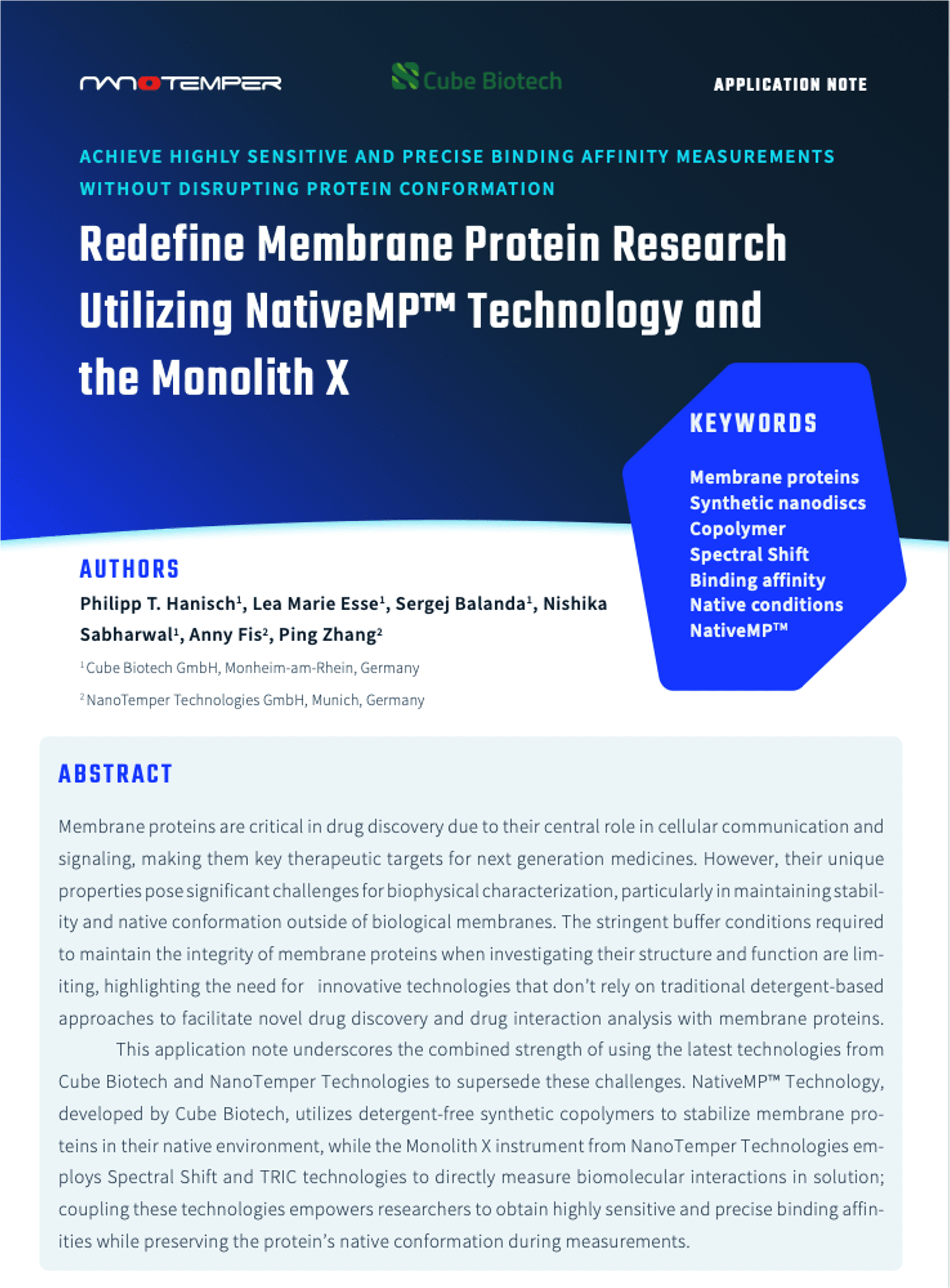Bartoschik, T., Zoephel, A., Rumpel, K., et al.
Methods in Molecular Biology 2021, doi: 10.1007/978-1-0716-1665-9_6
Abstract
PROTACs have shown promise as a new class of therapy, with a unique mechanism of action orthogonal to traditional small molecules that are used to regulate protein activity. Their novel MOA utilizing the body’s natural protein degradation machinery degrades a protein of interest rather than inhibiting its function. This strategy has several advantages over conventional small-molecule inhibitors, e.g., higher sensitivity, less off-target effects, and greater target space. However, unlocking the potential of PROTACs necessitates drug discovery techniques that can support the complexity of the novel MOA. In this chapter, we describe the application of MicroScale Thermophoresis (MST) and Temperature-Related Intensity Change (TRIC) to characterize both the binary and ternary binding of PROTACs with target proteins and ubiquitin ligases along with an efficient determination of the cooperativity of the ternary complex formation. The assay development and experimental procedure to characterize the well-described BET PROTAC MZ1 show how MST and TRIC can be applied as a fast and highly sensitive method for PROTAC discovery.
Topics: Monolith, MST, PROTACs, Publications










